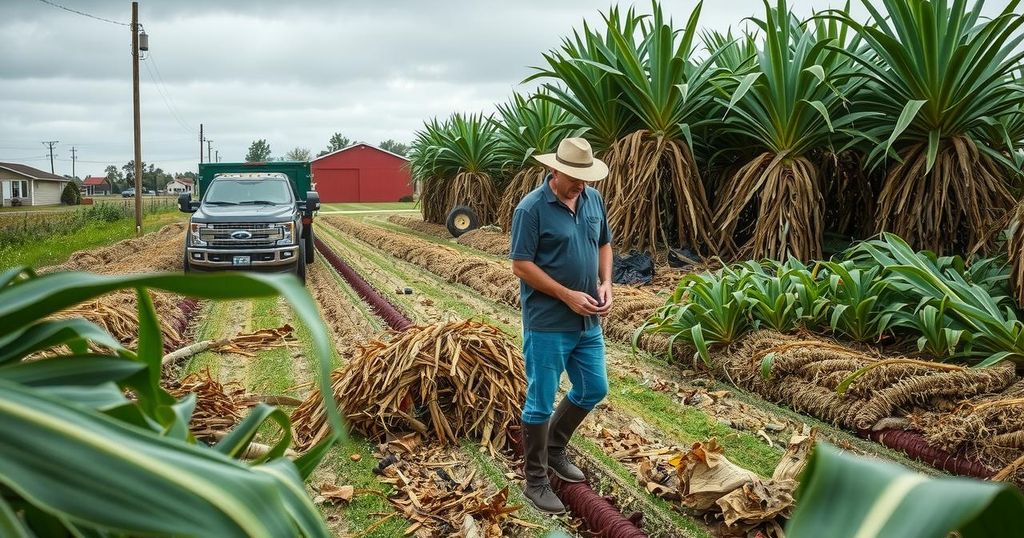Hurricane Helene has left farmers in the South, particularly in Georgia, with severe crop and infrastructure damage, leading to losses exceeding $10 billion. Financial recovery is tenuous, especially for key crops like cotton and poultry, with farmers expressing urgent needs for federal and state aid. The broader economic implications for regional agriculture remain concerning as recovery efforts proceed amidst challenges.
Farmers in Georgia and other Southern states are still grappling with the aftermath of Hurricane Helene, which struck in late September as a Category 4 storm. The destruction caused by the hurricane has left farmers like Chris Hopkins emotionally and financially devastated, with extensive damage to their crops and equipment. Experts estimate that the total losses for the agricultural sector may exceed $10 billion, impacting timber, farm machinery, and livestock operations. Hopkins reported losses of approximately 50% of his cotton crop, with financial recovery options limited despite insurance.
The storm inflicted severe damage during the critical harvest period, particularly affecting cotton and pecan crops. The University of Georgia noted that Georgia farmers alone suffered losses upwards of $5.5 billion, while North Carolina farmers reported damages totaling $3.1 billion. The dire economic circumstances have forced Georgia’s government to reallocate $100 million for emergency loans, although direct aid for damaged businesses remains unconstitutional. Federal disaster aid is being discussed in Congress, but local farmers stress the urgency of receiving assistance to rebuild.
The impact of Hurricane Helene extends beyond the immediate damage, as many farmers face significant delays in recovery and a long road to restore their operations. For instance, Jeffrey Pridgen, who lost substantial income from damaged poultry houses, remarked on the daunting task of rebuilding, highlighting the extent to which Helene’s aftermath has affected livelihoods and future plans. Development efforts by farmers are hindered, leading to potential shortages in certain products like pecans in the market, although overall consumer prices may remain stable due to supplies from unaffected regions.
Additionally, the hurricane has led to the destruction of significant agricultural infrastructure, leaving farmers and processing plants in ongoing recovery mode, which could last for years. The collaborative efforts of farmers, experts, and government agencies will be essential in navigating the challenges presented by Hurricane Helene’s impact.
In September 2018, Hurricane Helene made landfall in Florida and swiftly moved northward, causing widespread destruction across several Southern states. The storm was categorized as a major hurricane, with winds strong enough to topple trees and damage agricultural infrastructure. As farming is a critical aspect of the Southern economy, its impact is profound, resulting in significant financial losses for farmers and agribusinesses reliant on the region’s crops. The hurricane specifically targeted crops in their vulnerable harvesting stages, exacerbating the fallout during an already challenging season for farmers.
The devastation wrought by Hurricane Helene continues to impact farmers significantly, with financial losses estimated at over $10 billion across the Southern agricultural sector. Hurricanes present significant challenges not only due to direct damage but also because of the psychological toll on farmers who must cope with the aftermath. Swift and comprehensive aid from both state and federal levels may mitigate further losses and support the recovery of vital agricultural operations, ensuring the long-term sustainability of this critical industry.
Original Source: brookingsregister.com






